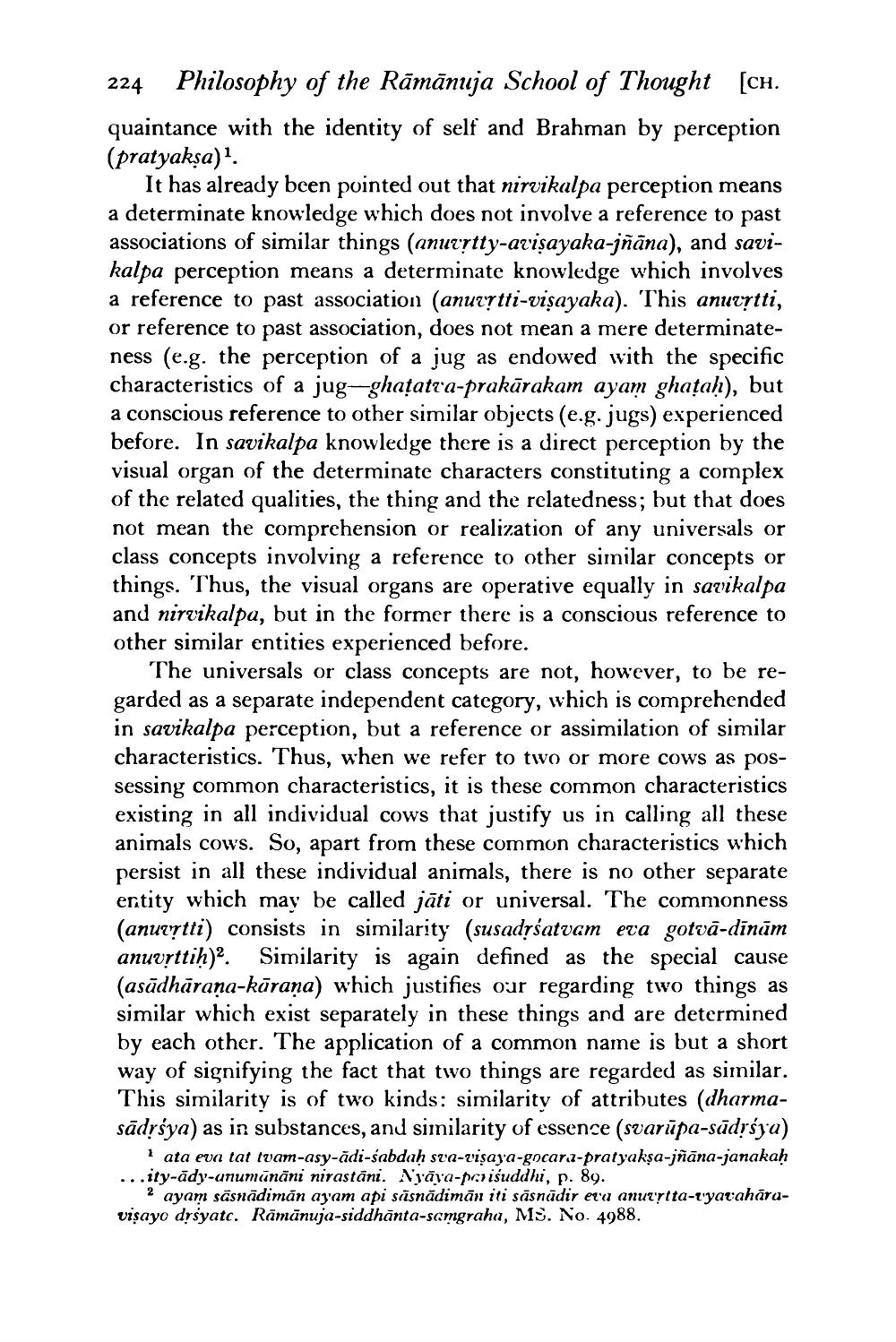________________
224 Philosophy of the Rāmānuja School of Thought [ch. quaintance with the identity of self and Brahman by perception (pratyaksa)
It has already been pointed out that nirvikalpa perception means a determinate knowledge which does not involve a reference to past associations of similar things (anurytty-avişayaka-jñāna), and savikalpa perception means a determinate knowledge which involves a reference to past association (anurtti-visayaka). This anurrtti, or reference to past association, does not mean a mere determinateness (e.g. the perception of a jug as endowed with the specific characteristics of a jug--ghatatra-prakārakam ayam ghataḥ), but a conscious reference to other similar objects (e.g. jugs) experienced before. In savikalpa knowledge there is a direct perception by the visual organ of the determinate characters constituting a complex of the related qualities, the thing and the relatedness; but that does not mean the comprehension or realization of any universals or class concepts involving a reference to other simnilar concepts or things. Thus, the visual organs are operative equally in savikalpa and nirvikalpa, but in the former there is a conscious reference to other similar entities experienced before.
The universals or class concepts are not, however, to be regarded as a separate independent category, which is comprehended in savikalpa perception, but a reference or assimilation of similar characteristics. Thus, when we refer to two or more cows as possessing common characteristics, it is these common characteristics existing in all individual cows that justify us in calling all these animals cows. So, apart from these common characteristics which persist in all these individual animals, there is no other separate entity which may be called jāti or universal. The commonness (anuortti) consists in similarity (susadȚśatvam era gotvā-dīnām anuvrttiḥ)?. Similarity is again defined as the special cause (asādhārana-kūraņa) which justifies our regarding two things as similar which exist separately in these things and are determined by each other. The application of a common name is but a short way of signifying the fact that two things are regarded as similar.
This similarity is of two kinds: similarity of attributes (dharmasādrśya) as in substances, and similarity of essence (svarūpa-sādrója)
Iata eva tat tvam-asy-ādi-sabdah sva-vişaya-gocara-pratyakşa-jñāna-janakah ...ity-ady-unumūnāni nirastani. Nyāya-parisuddhi, p. 89.
2 ayam sāsnādiman ayam api siisnādimān iti sāsnūdir et'u anutrita-t'yavaharavişayo drsyatc. Rāmānuja-siddhanta-samgraha, MS. No. 4988.




